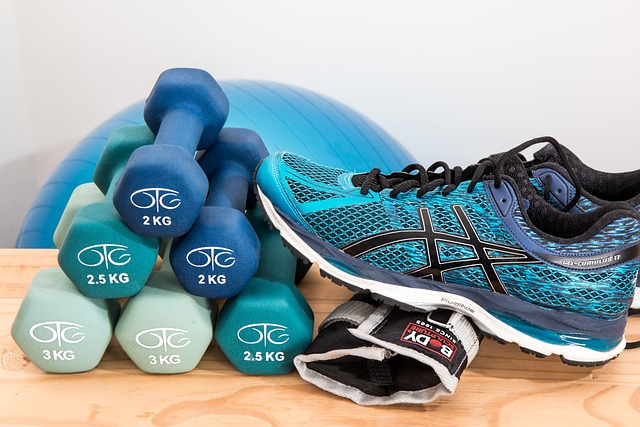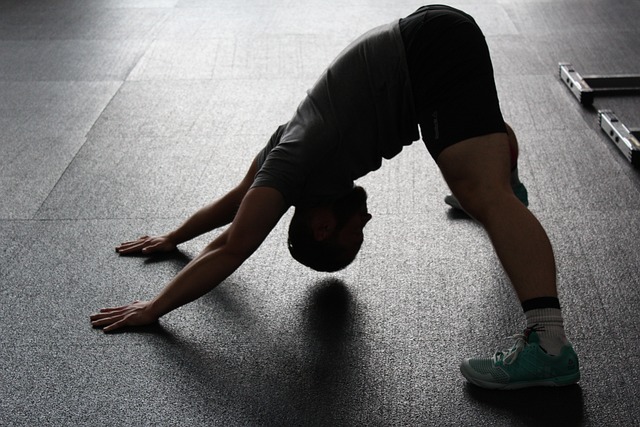Meta Description
Unlock the secrets to making fitness a lifelong habit for beginners. Discover motivation, tips, and resources to achieve your health goals. Consider how to consistently work out at home.
Making fitness a habit for beginners
Introduction to Making Fitness a Habit
Getting into a regular exercise routine can be challenging, especially for beginners. However, the rewards of making fitness a habit are truly remarkable.
Regular exercise is not just about achieving that beach-ready body or fitting into those skinny jeans; it goes far beyond mere appearances. It is about taking care of your overall well-being and embracing a healthier lifestyle.
Importance of regular exercise for overall well-being
Regular exercise plays a crucial role in maintaining good physical and mental health. When we engage in physical activity, our bodies release endorphins, which are known as “feel-good” chemicals that boost our mood and reduce stress levels. Moreover, exercising regularly helps improve cardiovascular health by strengthening the heart muscle and enhancing blood circulation throughout the body.
Beyond the immediate benefits, incorporating exercise into your daily routine can significantly reduce the risk of developing chronic conditions such as obesity, diabetes, and heart disease. Physical activity also helps maintain healthy bones and muscles, improves sleep quality, increases energy levels, and enhances cognitive function.
Benefits of making fitness a habit for beginners

For beginners embarking on their fitness journey, establishing regular exercise habits brings numerous advantages. Firstly, adopting an active lifestyle helps build discipline by creating structure in one’s daily routine. By committing to set times dedicated to physical activity, you develop valuable time-management skills that extend beyond your workouts.
In addition to discipline, making fitness a habit boosts self-confidence as you witness progress in your strength and endurance over time. Setting realistic goals and achieving them through consistent effort instills a sense of accomplishment that carries over to other areas of life.
Furthermore, regular exercise promotes better mental focus and concentration by stimulating brain function through increased oxygen flow. Note: The informal style has been used, but with an emphasis on clarity and detail.
Understanding the Basics of Fitness
Different types of exercises (cardio, strength training, flexibility)
Fitness is a multifaceted journey that encompasses various exercise types, each targeting different aspects of physical well-being. Cardiovascular exercises, also known as cardio, are fantastic for boosting heart health and improving endurance. Activities like running, cycling, swimming, or dancing get your heart rate up and increase blood flow throughout the body.
On the other hand, strength training focuses on building and toning muscles through resistance exercises. This form of exercise can involve weightlifting or using resistance bands and helps improve overall strength and body composition.
Flexibility exercises play a crucial role in maintaining joint mobility and preventing injuries. Incorporating activities like yoga or stretching routines into your fitness regimen can enhance flexibility over time.
Remember to start with beginner-friendly poses or stretches if you’re new to this type of exercise to avoid strain or discomfort. By understanding these different types of exercises, beginners can have a well-rounded approach to fitness that addresses cardiovascular health, muscle strength development, and flexibility enhancement.
Setting realistic goals based on individual fitness level
When embarking on a fitness journey as a beginner, it’s essential to set realistic goals that align with your current fitness level. Unrealistic expectations often lead to disappointment and frustration—both roadblocks on the path towards making fitness a habit for life.
Start by assessing where you are physically and consider any limitations or restrictions you might have. Setting specific goals is crucial because it provides clarity and direction to your fitness journey.
For example, aiming to run 5 kilometers without stopping within three months can be more motivating than just wanting to “get fit.” Break down long-term goals into smaller milestones so that progress becomes tangible along the way. Remember that everyone’s starting point is different; what might be achievable for someone else may not apply directly to you.
Celebrate every achievement, no matter how small, as they contribute to your overall progress. By setting realistic goals that consider your individual fitness level, you can establish a solid foundation and build upon it gradually and sustainably.
Creating a Workout Routine
Determining the Best Time and Frequency for Workouts
Finding the perfect time to squeeze in a workout can be a puzzle, but fear not, for with a little experimentation and flexibility, you’ll crack the code! Some people are early birds who swear by morning workouts to kickstart their day with a burst of energy.
Others prefer evening sessions to unwind after work. The key is to choose a time when you’re least likely to encounter distractions or interruptions.
Consider your daily schedule and obligations. If mornings are usually chaotic, an evening workout might be more suitable for you.
On the other hand, if your evenings are often filled with commitments, such as family activities or social events, seizing the morning could be your best bet. Experiment with different times until you discover what works best for your body and lifestyle.
When it comes to frequency, consistency is key. Aim for at least three to five workouts per week if you’re just starting out.
This allows your body adequate time to rest and recover between sessions while gradually building stamina and strength. As you progress on your fitness journey, you can gradually increase the frequency according to your goals and capabilities.
Choosing Activities that Align with Personal Interests and Preferences
Fitness doesn’t have to be dull or monotonous; it should be enjoyable! To make exercise sustainable in the long run, it’s crucial to choose activities that align with your personal interests and preferences. Consider what excites you: Are you drawn to high-energy workouts like dancing or kickboxing?
Or perhaps outdoor activities like hiking or cycling appeal more? Maybe team sports like basketball or soccer provide that competitive edge that motivates you?
The options are endless! Experiment with different types of exercises until you find ones that resonate with you both physically and mentally.
Don’t shy away from trying new things either; after all, you never know what hidden talents or passions might emerge. Remember, the best workout routine is the one that keeps you coming back for more, where you lose track of time and find yourself eagerly anticipating your next session.
By determining the best time and frequency for workouts and choosing activities that align with your personal interests and preferences, you’re setting yourself up for success on your fitness journey. So go ahead, grab a pen and paper (or open that fitness app) and start designing your tailor-made workout routine that will make you excited to sweat it out!
Starting Slow and Gradually Increasing Intensity
When embarking on a fitness journey, it can be tempting to dive headfirst into intense workouts. However, starting slow and gradually increasing the intensity is key to preventing injuries and ensuring long-term success.
By easing into exercise, beginners give their bodies time to adapt and build endurance gradually. Before pushing yourself too hard, take the time to assess your current fitness level.
If you haven’t been physically active for a while, it’s crucial to start with low-impact activities such as walking or swimming. As your body becomes accustomed to these exercises, you can then begin incorporating more challenging activities like jogging or cycling.
Importance of Warm-Up Exercises before Each Workout Session

Before jumping into your workout routine, don’t forget the importance of warming up! Warm-up exercises help prepare your body for physical activity by increasing blood flow to the muscles and joints.
This not only helps prevent injuries but also enhances performance during the actual workout. A dynamic warm-up routine typically involves light cardio exercises like jogging in place, jumping jacks, or high knees.
Additionally, performing dynamic stretches that target major muscle groups can further prepare the body for exercise. Examples include arm circles, leg swings, and torso twists.
Incorporating Rest Days to Prevent Burnout and Injuries
While enthusiasm is admirable when starting a fitness journey, it’s essential not to underestimate the power of rest days. Rest days allow your body time to recover from intense workouts and reduce the risk of overuse injuries.
During rest days, focus on gentle activities such as stretching or engaging in active recovery exercises like yoga or Pilates. These low-impact activities help maintain flexibility while giving your muscles a chance to repair themselves.
Remember, rest days are not a sign of weakness but rather a vital component of any workout routine. Embrace them as an opportunity to rejuvenate both your body and mind, ensuring that you can continue making progress in your fitness journey without burning out.
Finding Motivation and Overcoming Obstacles
Identifying personal motivations for staying fit (e.g., improved health, increased energy)
When embarking on a fitness journey, it’s crucial to identify your personal motivations for staying fit. For some, it may be the desire to improve overall health and well-being.
Regular exercise has been proven to reduce the risk of various chronic diseases such as heart disease, diabetes, and certain types of cancer. So, by making fitness a habit, you’re investing in your long-term health.
Others may find motivation in the increased energy levels that come with regular exercise. It’s no secret that physical activity boosts endorphin levels in our bodies.
These feel-good hormones not only enhance our moods but also provide us with a natural energy boost that can carry us throughout the day. By incorporating fitness into your routine, you’ll find yourself feeling more energized and better equipped to tackle daily tasks.
Tips for overcoming common obstacles (lack of time, lack of motivation)
One common obstacle many beginners face is a perceived lack of time. It’s understandable; life can get busy!
But remember, making fitness a priority means finding time for it amidst your day-to-day activities. Look at your schedule and identify pockets of time where you can squeeze in a workout – whether it’s early morning before work or during lunch breaks.
Lack of motivation is another hurdle that many individuals encounter when trying to establish a fitness habit. One effective way to overcome this is by finding an exercise routine or activity that you genuinely enjoy.
Whether it’s taking dance classes or going for long walks in nature – discovering something you look forward to doing will significantly increase your motivation level. Additionally, having an accountability partner or joining a fitness community can provide the necessary support and encouragement when motivation wanes.
By identifying personal motivations and implementing strategies to overcome common obstacles, you’ll find yourself well on your way to making fitness a habit. Remember, it’s all about finding what works for you and staying committed to your goals.
Incorporating Healthy Habits into Daily Life
Balancing exercise with proper nutrition for optimal results
Maintaining a healthy lifestyle goes beyond just breaking a sweat at the gym. It’s crucial to strike a balance between regular exercise and nourishing your body with the right nutrition to achieve optimal results.
When it comes to fitness goals, understanding macronutrients is key. Macronutrients are the three essential components of our diet: carbohydrates, proteins, and fats.
Carbohydrates provide our bodies with energy, especially during high-intensity workouts. Opt for complex carbohydrates like whole grains, fruits, and vegetables as they release energy slowly and keep you fueled throughout the day.

On the other hand, proteins play a vital role in muscle repair and growth. Lean sources like chicken breast, fish, legumes, and tofu are excellent options to consider.
Fats have long been misunderstood but are essential for overall health. Incorporate healthy fats such as avocados, nuts, olive oil, and fatty fish into your diet.
Remember that moderation is key here – quality matters more than quantity when it comes to fat intake. Strive for a well-rounded diet that includes all three macronutrients in appropriate portions to support your fitness journey.
Meal planning tips for maintaining a healthy diet
To maintain a healthy diet while juggling various responsibilities in life can be challenging at times. Meal planning can be an effective strategy to ensure you stay on track with your nutrition goals without feeling overwhelmed or resorting to unhealthy choices.
Start by carving out some time each week dedicated to meal planning. Choose recipes that align with your nutritional needs and preferences – this way you’ll look forward to enjoying your meals rather than considering them as mere fuel.
Make a detailed grocery list based on these recipes and stick to it while shopping; this will help prevent impulse purchases of unhealthy snacks or processed foods. Consider prepping ingredients and meals in advance to save time during busy weekdays.
Chop vegetables, grill some chicken, or cook grains ahead of time so that you have the building blocks ready for quick and healthy meals. Invest in good quality food storage containers to store these prepped ingredients and cooked meals safely.
Remember to include a variety of colorful fruits and vegetables, whole grains, lean proteins, and healthy fats in your meal plans. This way, you’ll ensure a well-rounded and nutritious diet that supports your fitness goals.
Hydration importance during workouts

When it comes to exercise, proper hydration is often underestimated but plays a crucial role in maintaining peak performance. During workouts, our bodies lose water through sweat, which can lead to dehydration if not replenished adequately.
As a general guideline, aim to consume at least 8 cups (64 ounces) of water per day – this includes both fluids consumed directly as well as from foods with high water content such as fruits and vegetables. However, when engaging in intense physical activities like workouts or sports, it’s essential to drink even more water to compensate for the increased fluid loss.
Before starting your workout session, hydrate properly by drinking at least 16 ounces of water about two hours beforehand. During the workout itself, sip on water regularly – small sips every 15-20 minutes should suffice for most individuals.
If your exercise session exceeds an hour or involves vigorous sweating, consider replenishing electrolytes lost through sweat with sports drinks or electrolyte-enhanced beverages. Remember that thirst isn’t always an accurate indicator of hydration levels; it’s best to stay proactive rather than waiting until you feel thirsty.
Proper hydration will not only enhance your performance but also aid in muscle recovery post-workout while promoting overall well-being. Incorporating these healthy habits into your daily life will not only support your fitness goals but also contribute to a healthier and more energetic lifestyle.
Taking Advantage of Technology and Resources
Utilizing fitness apps or wearable devices to track progress
In today’s digital age, we have an abundance of technology at our fingertips that can greatly assist us on our fitness journey. Fitness apps and wearable devices have become increasingly popular among beginners as they provide a convenient and effective way to track progress.
Whether you’re using a smartphone or a smartwatch, these tools offer numerous features like step counters, heart rate monitors, calorie trackers, and workout logs. By utilizing such technologies, you can gain valuable insights into your daily activity levels and make informed decisions about your fitness routine.
Moreover, many fitness apps also provide personalized workout plans tailored to your goals and fitness level. These plans often come with detailed exercise demonstrations and instructions to ensure proper form and minimize the risk of injury.
Additionally, some apps offer interactive features such as virtual trainers or challenges that can help keep you motivated along the way. With the ability to monitor your progress in real-time through these innovative tools, you’ll be able to stay accountable and make adjustments whenever necessary.
Exploring online resources and communities for support and guidance
The internet has revolutionized the way we access information, making it easier than ever for beginners to find support and guidance in their fitness journey. When starting out on your path towards making fitness a habit, exploring online resources can provide a wealth of knowledge at your fingertips.
There are countless websites dedicated to health and wellness that feature articles, videos, tutorials, nutritional guidelines, exercise routines – basically everything you need to kickstart your fitness journey. Additionally, joining online fitness communities or forums allows you to connect with like-minded individuals who share similar goals or struggles.
Not only can you seek advice from experienced members who have been through similar situations but also find inspiration from those who have achieved remarkable results themselves. Online communities foster an environment of support and encouragement, which can play a crucial role in keeping you motivated and accountable.
Whether you’re sharing your progress, seeking advice, or simply finding a place to vent your frustrations, these communities can create a sense of camaraderie that makes the journey more enjoyable. Technology and online resources have revolutionized the way beginners approach fitness.
Utilizing fitness apps or wearable devices allows for accurate tracking of progress, while online resources and communities offer a wealth of knowledge and support. By embracing these tools, you can enhance your fitness journey and increase your chances of successfully making exercise a lifelong habit.
So why not take advantage of the technological advancements available at your fingertips? Embrace the power of fitness apps and explore online resources to kickstart your transformation today!
Staying Consistent in the Long Run
Finding a Fitness Support System
Embarking on a fitness journey can sometimes feel overwhelming, especially when you’re going at it alone. That’s why finding a fitness support system, such as workout buddies or joining fitness classes/groups, can make all the difference in staying consistent in the long run. Having someone there to motivate and encourage you during your fitness journey can be incredibly beneficial.
Workout buddies offer companionship and accountability. They provide an extra push on those days when motivation is lacking, making it harder to hit that snooze button and skip your workout.
You can schedule regular workout sessions together, ensuring that both of you show up and give your best effort. Moreover, sharing your progress and discussing challenges with someone who understands your goals creates a sense of camaraderie and makes the process more enjoyable.
Adapting to Lifestyle Changes
A common obstacle many beginners face is figuring out how to maintain a regular exercise routine amidst various lifestyle changes. Whether it’s a new job, family responsibilities, or shifting priorities—life has a way of throwing curveballs that can disrupt even the best-laid plans. The key to staying consistent despite life’s unpredictability is adaptability.
Realize that not every day will go as planned, and that’s okay! Embrace flexibility by adjusting your workout schedule to accommodate changes whenever necessary.
Perhaps this means reshuffling your routine or finding alternative ways to stay active during busy periods. Incorporating exercise into daily life activities can also help maintain consistency.
For instance, if you have limited time for dedicated workouts due to work commitments or family obligations, try incorporating physical activity into everyday tasks like taking the stairs instead of using an elevator or going for brisk walks during lunch breaks. Remember, adapting to lifestyle changes doesn’t mean giving up on your fitness goals; it means being resourceful and finding creative ways to make exercise a priority no matter what life throws at you.
Celebrating Milestones and Progress
Setting short-term goals to keep motivation high
One of the keys to making fitness a habit is setting short-term goals that are achievable and measurable. These goals act as milestones along your fitness journey, giving you something to work towards and celebrate.
When setting these goals, it’s important to be realistic and specific. For example, instead of simply saying “I want to lose weight,” you could set a goal like “I want to lose 5 pounds in the next month.” This way, you have a clear target in mind and can track your progress.
Once you’ve set your short-term goals, it’s crucial to keep yourself motivated by regularly celebrating your achievements. When you reach a milestone, take the time to acknowledge your hard work and reward yourself.
This can be anything from treating yourself to a massage or buying new workout gear as a token of your progress. By celebrating these small victories, you reinforce positive behavior and build momentum towards achieving your long-term fitness goals.
Conclusion
Making fitness a habit for beginners requires commitment, perseverance, and an understanding of the importance of setting realistic goals. By incorporating regular exercise into your daily routine and gradually increasing intensity over time, you can improve both physical health and mental well-being. Finding motivation through personal incentives or joining online communities can help overcome obstacles that may arise along the way.
Remember to celebrate milestones along the journey by setting short-term goals that keep motivation high. With each step forward on this fitness journey, no matter how small, remember that every effort counts towards building healthier habits for life.
Embrace the process of change with enthusiasm and determination; soon enough, what was once an uphill battle will become second nature. Stay focused on your progress rather than perfection; even the smallest steps bring about remarkable transformations over time.
So go forth, embrace the joy of movement, and let your commitment to fitness flourish. Your body and mind will thank you for it!
